Can you please just answer the Part 1 I already finished the
Can you please just answer the Part 1.
I already finished the part 2 and 4. Thanks!
Jane Boyd Community House http://janeboyd.org
Marketing Plan Template
The Challenge
Jane Boyd would like to increase awareness in the community and increase program
participation from community referrals. Currently they are most known for a
discontinued sports program however they are so much more. Reaching a large
number of people in the in the city on a small budget will be the biggest challenge.
Four Oaks handles the marketing for Jane Boyd and unfortunately Jane Boyd has not
received enough marketing support due to other higher priority agencies. This also
adds to the challenge Jane Boyd is dependent on Four Oaks to make timely updates to
social media outlets.
Part†One†Your†Organization
a. Goals—What you want to accomplish
Organizational Goals : What are your organization’s one to three main goals for the next 12
to 18 months?
Marketing Goals : What are your one to three marketing goals (how you’ll use marketing to
reach those organizational goals)?
Examples:Organizational goal for Environmental Health Partners (EHP):
Improve regional health by significantly reducing exposure to toxic chemicals like lead in homes, bay contamination, and air pollution from trucks, ships, power plants and other sources.
Marketing goals:
Build awareness about EHP’s work and impact.
Motivate 15 area residents to attend a two-part community meeting (to be held in each of four neighborhoods in the region), to build their understanding of the relationship between health and the environment and train them as effective advocates.
Forge partnerships with key partner organizations in the region with existing relationships with citizens and policymakers.
b. Situation Analysis—Conditions inside and outside your organization
What is the environment in which you’re working? You can assess the
situation in several ways:
Environmental scan: What policies, practices, or other factors could
help or hurt your marketing success?
Competitive analysis: What are other organizations providing in terms
of content, programs and resources? How successful are they?
Audience research: What does your audience think about your
organization, its work and/or the issues you work on?
Marketing audit: What current marketing work is succeeding, and
what needs to change and how?
Internal audit: What are the perceptions, hopes, ideas and concerns
of staff and leadership in relation to the marketing agenda?
____________________
Gather Insights from data, what you know/see/hear, and asking and
listening.
Use them to shape your marketing plan, then update it regularly to keep
it relevant.
c. Calls to Action—What you want your audiences to do
What do you want your target audiences to do to achieve your marketing goals? Be specific.
Examples:
Subscribe to our enewsletter.
Like our Facebook page and share your question there.
Participate in our community meeting.
Share your story.
Learn about environmental dangers in and around your home.
Collaborate on a project with us.
Part†Two Customer Analysis
Number of Participants
PATHs - 75 participants per year
Achievement Academy - 200 children a year
Family Support - 70 families
Other programs combined - 5365 annually
Total Number Served Annually - 5700
Type - Low income families, unemployed / underemployed individuals, children from Kindergarten to 8th grade, and parents.
Value drivers - Jane Boyd is able to assist the entire family unit. This is their biggest competitive advantage.
Decision process - The decision process for Jane Boyd customers is based around needs and what is best for the family unit. Many of the programs aid in filling a need whether it be child care, internet access, resume writing, interview practice, or bread. The list goes on and on depending on which needs the program participant has.
Concentration of customer base - The highest concentration of participants live on the Southeast side of Cedar Rapids, although there are also a high number of participants based in Southwest Cedar Rapids as well. Based on population statistics from http://www.city-data.com/neighborhood/Wellington-Heights-Cedar-Rapids-IA.html, Wellington Heights has a population of 4,473, Oakhill Jacksons population is 1,514 and Taylor neighborhood population is 3,905.
Target audiences and Segments
Description
Jane Boyd Community House has been a part of the Cedar Rapids community for 92 years. At one time they were a prominent figure known for their robust sports programs however in recent years the recognition has slowly faded as proven by the results of our survey. Out of 80 respondents only two recognized and knew the organization associated with Jane Boyd’s logo, 39 recognized the logo but couldn\'t name the organization and 35 did not recognize the logo at all.
Based on the survey results and scope of the marketing plan it is necessary to target prominent businesses in the community who will be able to spread Jane Boyd’s message quickly and aid in the community reintroduction. The businesses to target will predominantly reside on the southeast and southwest side of Cedar Rapids where the Jane Boyd facilities are located and they must have reputable and strong ties to the community.
Also to be utilized are program participants, current Jane Boyd Board Members and employees. All three parties have an emotional tie to Jane Boyd and could easily aid in the increase of community awareness.
What they want
Businesses who have strong community ties are typically eager to help local nonprofit organizations whether it be via volunteer programs or donations. They want to contribute to worthwhile causes for the community and receive positive public relations. Both for profit and nonprofit organizations all have one thing in common and that is the need for brand recognition and when two businesses can work together and increase this recognition with little to no cost it is a win win situation.
Program participants, Board Members and Employees all want Jane Boyd to be successful and recognized for the amazing work they do every day.
Support Requirements:
To support their efforts Jane Boyd will provide marketing materials and informational pamphlets to ensure the business partners understand the importance of Jane Boyd\'s work in the community and are comfortable educating their customers. It is also imperative that Jane Boyd connect with businesses and groups on LinkedIn to increase visibility. In addition, Jane Boyd will also utilize other social media outlets such as Facebook and Twitter via Board Members and Employees to reach the community and improve awareness.
Word of mouth is one of the strongest marketing tools for a business and Jane Boyd will begin encouraging participants to share their experiences about the programs with friends and family.
Market Segmentation
Target Audience: City of Cedar Rapids – We want to increase the community awareness and brand recognition for Jane Boyd Community House. By reintroducing Jane Boyd to the community we expect to increase donations, event participation and program participants from community referrals.
Segments: Southeast and southwest Cedar Rapids churches and medical facilities will aid in reaching the top tier of donors as reported by PR Newswire.
Ages 55 and older
Active in the community
Social media users are another segment we will target to increase community awareness.
Ages 25 to 35
Uses social media daily
Annual household incomes over 75k
Participants
Engaged
Positive change can be recognized and attributed to program involvement
Able and willing to create a testimonial
Social media user
Employees and Board Members
Neighborhood committees, Chamber of Commerce, Greater Cedar Rapids Foundation, schools, colleges, Junior League of Cedar Rapids and other prominent businesses in the community.
Strong ties to the community
Good reputation
Have the ability to reach a large audience
Encourage their staff to volunteer
Media Outlets
Offer ability to advertise events for free for example KCRG morning mugshot
Allow articles to be written and printed with no charge.
Target audience: Cedar Rapids Businesses – PATHs is a program Jane Boyd offers to aid under or unemployed individuals by providing them the skills necessary to improve income potential. The PATHs program relies on businesses in the community to offer internships, mentoring and guidance to the program participants. We are targeting 5 new businesses in the Cedar Rapids area willing to become members of the program.
SegmentsLeaders and staff at local businesses with strong ties to the community.
Chamber of Commerce
Greater Cedar Rapids Foundation
Junior League of Cedar Rapids
Businesses who have donated/volunteered in the past to Jane Boyd but are not currently involved in PATHs. Examples: Lowes or ImOn Communications
Board Members and employees
Have existing relationships with local businesses
Engaged
Part†Three†Your†Messages¨†Methods†&†Tactics
a. Benefit Exchange and Barriers to the Call to Action
Benefit†Exchange†:
o†Seek to ensure those in need and at risk families have the support they need to become
successful and productive citizens
o†More successful and productive citizens decreases poverty, crime rates, and can have a
positive impact the economy and perception of the community.
Barriers†: What’s in the way of you motivating the actions you want supporters to take?
o†People in the community associate Jane Boyd with old services such as Youth Sports
programs.
o†Past challenges with priority of marketing activities through Four Oaks Marketing Department.
o†Community members are not fully aware of the holistic services Jane Boyd offers.
b. Best Methods—To achieve your marketing goals
How can you best motivate your supporters to act? Options are: Branding/Positioning, Message
Development, Content Creation, Training, Relationship Building, Community Building and
Organizing
Social Media communication schedule
CoBranding
Golf Classic Fundraiser with Jane Boyd
Monthly Blog/editorial in Wellington Heights Newsletter
Examples:
Build the network : Nurture relationships with prospective “supporters” within relevant local
organizations, from the Lions Club to the Chamber of Commerce.
Message development : Shape and deliver messages that will clarify for, connect with and
engage your audiences. Consistent, memorable messaging helps your base to keep your
organization top of mind, recognize its relevance to them, and spread the word about it.
c. Best Tactics—To put your methods into action
How can you connect with your supporters via these methods, e.g. the nittygritty?
Will be
based on your target audiences’ habits and preferences, as well as which tactics work best to
achieve your goals.
Utilize local colleges for social media marketing management. Also can hire interns for
reasonable pricing to assist with marketing needs. Gain more donations by agreeing to
reference partners in messages on social media.
o Seek grants from Google to be used for Google adwords.
Google adwords get set up once and then takes minimal monitoring and adjustments.
o Hand out fliers in the highest needs area of the community. Utilize partners like HyVee
to
post
fliers.
o Referrals from program participants. Encourage kids and families to invite their friends to
participate. Allow them to have some fliers and encourage others to join.
o Success stories should be highlighted and past participants used to help sell the program.
This could be done via editorial in the paper.
News outlets could do a story.
Utilize the community bulletin boards, newsletters.
o Plan created for frequency and messages to be sent out by Four Oaks.
o Request Jane Boyd branding be added to the events held by Four Oaks that benefit Jane
Boyd.
o Events Gospel Brunch – When will it be held and what will help make it successful?
o Hold open houses at different Jane Boyd locations to increase awareness.
o Utilize the Board members to aid in spreading community awareness via social media outlets
https://www.google.com/grants/eligibility/index.html
they utilize by requiring they post about upcoming events and the programs that are offered.
Blog highlighting things that are happening in the JB programs, share success
stories/testimonials
Examples:
Message development—Audience research write positioning statement, tagline, talking
points test and refine develop style guide, train staff and board on messaging, launch.
Standards guide—Create a guide (PDF) for staff and volunteer messengers to use to make
decisions on messaging and “look and feel” of communications.
Develop a onepage
“leave behind” flyer summarizing the value of partnering for prospects,
and a series of emails to follow inperson
visits to partner prospects).
Part Four: Put It All Together
a. Resources—What it takes
· Roles and Responsibilities
Dorice as Director – overall planning and direction of the Jane Boyd facilities and staff.
Board of Directors, when information is rec’d. will also add info on each as their strengths might apply to this effort.
· Cost
Since the emphasis of this marketing plan centers on expanding and enhancing the publics’ awareness of JB, and is not focused on increased fund raising, any additional efforts would be covered by existing staff and/or recruiting volunteers. The recruitment of additional volunteers is covered below.
· Duration
There are segments of this plan that can be implemented almost immediately (e.g. social media postings and blogs), while there are also longer term efforts, such as speaking engagements by the Director at various business and community organizations, that would be ongoing until the plan is revised due to changing circumstances or updated to resist becoming stale. It is recommended that the Marketing Plan be formally reviewed semi-annually and updated on an annual basis.
· Training
The proposed steps should not require any additional training of staff; 4 Oaks currently manages the social media postings, etc. and the additions to social media exposure should not require additional training. Ms. Ramsey is an accomplished communicator and speaker and therefore will not require additional training to represent JB to the community and professional groups.
· Budget
Because most non-profits have limited budgets, and JB is no exception to this assumption, and because we are not focusing on additional fund raising in this marketing plan, the marketing plan has been specifically designed to utilize existing resources, with minimal reallocation if any, and provide creative, no-cost strategies to implement.
· Return on Investment
ROI will be tracked and measured by the benchmarks provided within the description of each proposed activity listed below.
b. Benchmarks and Measurement— Get to goal & stay on the path to move supporters
Increased Social Media Presence
Triple followers on Facebook within three months using posts by Ms. Ramsey and alternating members of the Board of Directors. Investigate feasibility of JB clients/families posting testimonials on the Facebook page. JB currently has 175 followers on Facebook.
Create and post YouTube and/or Ted Talk videos of Ms. Ramsey presenting information about JB and JB programs. This could be expanded to include videos of members of the Board of Directors doing the same. Investigate feasibility of JB clients/families posting testimonials on these sites. The first video is to be posted within 90 days, then this is an ongoing activity.
Set up and maintain a page for JB on Meetup.com to increase visibility to the local community and providing networking opportunities; set up and maintain a page for JB on NextDoor.com to recruit volunteers; to be completed within 30 days.
Create and maintain a presence for JB on LinkedIn to increase visibility to the business community; to be completed within 30 days.
Create and maintain a Twitter feed for JB. Provide regular, informative information through this outlet; to be completed within 30 days.
Link all social media sites to the website and each other. Completed within 30 days.
Blog and post on social media about what a donation means to JB, e.g. $25 buys a student a new backpack. This is an ongoing activity.
Increased Visibility to the Local Business Community
Network business contacts using existing relationships established by Ms. Ramsey and members of the Board of Directors. First discussion to be completed within 30 days, updated at regular board meetings as part of ongoing business, then this would be an ongoing activity.
Create and maintain a ½ to 1 hour presentation for Ms. Ramsey to use for speaking engagements to business, care provider and church groups; to be completed within 45 days.
Target 2 speaking engagements per month for the next six months, e.g. Chamber of Commerce, Junior League, Women’s Professional Group, Local NEA Chapter, churches. This starts by the end of 60 days and is ongoing from that time.
Update flyers to include all social media information and provide copies to neighborhood healthcare providers’ offices, churches and businesses; to be completed within 45 days.
Obtain approval for co-branding of golf tournament with 4 Oaks; to be completed within 60 days.
Offer businesses that support/sponsor PATH program visibility on the JB website and blog and post about their involvement; to be completed within 60 days and then becomes an ongoing activity.
Measurements
This is a fairly aggressive agenda with a compacted timeline. However, most of the tasks (especially those in the social media realm) are fairly simple to implement and monitor and the more complex tasks are given more time to set up and implement.
The first assessment of the efficacy of the social media should be three months after initial implementation, primarily to determine if the Facebook goal has been achieved and to provide baseline information on the activities of the other social media sites.
The second assessment is six months after implementation. At this time, it should be determined if the speaking engagements are booked and completed according to the goals set and to provide another set of data regarding the traffic and visibility on the social media sites.
The third assessment is nine months after implementation. By this time, a rhythm for the marketing activities should be firmly established. Data should be available to provide analysis of the usefulness of the presentations and visibility to the neighborhood healthcare providers, churches and businesses as well as the professional and business group in the community. Another data set from the social media sites should be cataloged at this time and used to compare with previous data.
The fourth assessment is one year after implementation. At this time, a thorough assessment of all activities should be conducted and the plan reviewed and revised to include new and updated goals and activities.
c. Step-by-Step Work Plan—Start with a 30-day plan, begin implementation then build out your plan to 90 days
days – The following activities are scheduled to be completed within 30 days of implementation of the marketing plan. The task assignment is discussed with each activity.
Set up and maintain a page for JB on Meetup.com to increase visibility to the local community and providing networking opportunities; set up and maintain a page for JB on NextDoor.com to recruit volunteers; to be completed within 30 days. The content of this activity would be created by Ms. Ramsey, her staff and/or members of the Board of Directors. Posting and maintaining tasks would be performed by 4 Oaks staff, since they currently control and monitor the social media tasks for 4 Oaks and 4 Oaks affiliates.
Create and maintain a presence for JB on LinkedIn to increase visibility to the business community; to be completed within 30 days. The content of this activity would be created by Ms. Ramsey, her staff and/or members of the Board of Directors. Posting and maintaining tasks would be performed by 4 Oaks staff, since they currently control and monitor the social media tasks for 4 Oaks and 4 Oaks affiliates.
Create and maintain a Twitter feed for JB. Provide regular, informative information through this outlet; to be completed within 30 days. The content of this activity would be created by Ms. Ramsey, her staff and/or members of the Board of Directors. Posting and maintaining tasks would be performed by 4 Oaks staff, since they currently control and monitor the social media tasks for 4 Oaks and 4 Oaks affiliates.
Link all social media sites to the website and each other; to be completed within 30 days. The content of this activity would be created by Ms. Ramsey, her staff and/or members of the Board of Directors. Posting and maintaining tasks would be performed by 4 Oaks staff, since they currently control and monitor the social media tasks for 4 Oaks and 4 Oaks affiliates.
Blog and post on social media about what a donation means to JB, e.g. $25 buys a student a new backpack. This is an ongoing activity. The content of this activity would be created by Ms. Ramsey, her staff and/or members of the Board of Directors. Posting and maintaining tasks would be performed by 4 Oaks staff, since they currently control and monitor the social media tasks for 4 Oaks and 4 Oaks affiliates.
Network business contacts using existing relationships established by Ms. Ramsey and members of the Board of Directors. First discussion to be completed within 30 days, updated at regular board meetings as part of ongoing business, then this would be an ongoing activity. These tasks would be performed by Ms. Ramsey and members of the Board of Directors.
days – The following activities are scheduled to be completed within 45 days of implementation of the marketing plan. The task assignment is discussed with each activity.
Create and maintain a ½ to 1 hour presentation for Ms. Ramsey to use for speaking engagements to business, care provider and church groups; to be completed within 45 days. Ms. Ramsey would be responsible for creating the content of this task. This task will require equipment and personnel capable of recording the content. Posting and maintaining tasks would be performed by 4 Oaks staff, since they currently control and monitor the social media tasks for 4 Oaks and 4 Oaks affiliates.
Update flyers to include all social media information and provide copies to neighborhood healthcare providers’ offices, churches and businesses; to be completed within 45 days. This task will take the efforts of Ms. Ramsey and staff from 4 Oaks; currently 4 Oaks publishes, prints and provides the flyers used by 4 Oaks and 4 Oaks affiliates.
60 days – The following activities are scheduled to be completed within 60 days of implementation of the marketing plan. The task assignment is discussed with each activity.
Target 2 speaking engagements per month for the next six months, e.g. Chamber of Commerce, Junior League, Women’s Professional Group, Local NEA Chapter, churches. This starts by the end of 60 days and is ongoing from that time. The task of finding and booking the speaking engagements will fall to Ms. Ramsey and members of the Board of Directors; Ms. Ramsey will be the speaker at the events.
Update flyers to include all social media information and provide copies to neighborhood healthcare providers’ offices, churches and businesses; to be completed within 45 days. The content of this activity would be created by Ms. Ramsey, her staff and/or members of the Board of Directors. Printing, publishing and providing flyers would be performed by 4 Oaks staff, since they currently provide printed materials for 4 Oaks and 4 Oaks affiliates.
Obtain approval for co-branding of golf tournament with 4 Oaks; to be completed within 60 days. Ms. Ramsey and members of the Board of Directors would be responsible for creating the strategic plan to 4 Oaks proposing this change in branding. The approval will be the responsibility of the Board of Directors of 4 Oaks. Once approved, co-branding tasks would be assigned to JB and 4 Oaks staff as needed.
Offer businesses that support/sponsor PATH program visibility on the JB website and blog and post about their involvement; to be completed within 60 days and then becomes an ongoing activity. Ms. Ramsey would be responsible for creating the content of this task. This task will require equipment and personnel capable of recording the content. Posting and maintaining tasks would be performed by 4 Oaks staff, since they currently control and monitor the social media tasks for 4 Oaks and 4 Oaks affiliates.
90 days – The following activities are scheduled to be completed within 90 days of implementation of the marketing plan. The task assignment is discussed with each activity.
Triple followers on Facebook within three months using posts by Ms. Ramsey and alternating members of the Board of Directors. Investigate feasibility of JB clients/families posting testimonials on the Facebook page. JB currently has 175 followers on Facebook. This task would be the responsibility of Ms. Ramsey to delegate to staff to monitor and report.
Solution
A marketing plan is a comprehensive blueprint which outlines an organization\'s overall marketing efforts. A marketing process can be realized by the marketing mix, which is outlined in step 4. The last step in the process is the marketing controlling.
The marketing plan can function from two points: strategy and tactics (P. Kotler, K.L. Keller). In most organizations, \"strategic planning\" is an annual process, typically covering just the year ahead. Occasionally, a few organizations may look at a practical plan which stretches three or more years ahead.
Behind the corporate objectives, which in themselves offer the main context for the marketing plan, will lie the \"corporate mission,\" in turn provides the context for these corporate objectives. In a sales-oriented organization, the marketing planning function designs incentive pay plans to not only motivate and reward frontline staff fairly but also to align marketing activities with corporate mission. The marketing plan basically aims to make the business provide the solution with the awareness with the expected customers.
This \"corporate mission\" can be thought of as a definition of what the organization is, or what it does: \"Our business is .This definition should not be too narrow, or it will constrict the development of the organization; a too rigorous concentration on the view that \"We are in the business of making meat-scales,\" as IBM was during the early 1900s, might have limited its subsequent development into other areas. On the other hand, it should not be too wide or it will become meaningless; \"We want to make a profit\" is not too helpful in developing specific plans.
Abell suggested that the definition should cover three dimensions: \"customer groups\" to be served, \"customer needs\" to be served, and \"technologies\" to be used.[1] Thus, the definition of IBM\'s \"corporate mission\" in the 1940s might well have been: \"We are in the business of handling accounting information [customer need] for the larger US organizations [customer group] by means of punched cards [technology].\"
Perhaps the most important factor in successful marketing is the \"corporate vision.\" Surprisingly, it is largely neglected by marketing textbooks, although not by the popular exponents of corporate strategy — indeed, it was perhaps the main theme of the book by Peters and Waterman, in the form of their \"Superordinate Goals.\" \"In Search of Excellence\" said: \"Nothing drives progress like the imagination. The idea precedes the deed.\" [2] If the organization in general, and its chief executive in particular, has a strong vision of where its future lies, then there is a good chance that the organization will achieve a strong position in its markets (and attain that future). This will be not least because its strategies will be consistent and will be supported by its staff at all levels. In this context, all of IBM\'s marketing activities were underpinned by its philosophy of \"customer service,\" a vision originally promoted by the charismatic Watson dynasty. The emphasis at this stage is on obtaining a complete and accurate picture.
A \"traditional\" — albeit product-based — format for a \"brand reference book\" (or, indeed, a \"marketing facts book\") was suggested by Godley more than three decades ago:
1. Financial data—Facts for this section will come from management accounting, costing and finance sections.
2. Product data—From production, research and development.
3. Sales and distribution data — Sales, packaging, distribution sections.
4. Advertising, sales promotion, merchandising data — Information from these departments.
5. Market data and miscellany — From market research, who would in most cases act as a source for this information. His sources of data, however, assume the resources of a very large organization. In most organizations they would be obtained from a much smaller set of people (and not a few of them would be generated by the marketing manager alone).
It is apparent that a marketing audit can be a complex process, but the aim is simple: \"it is only to identify those existing (external and internal) factors which will have a significant impact on the future plans of the company.\" It is clear that thebasic material to be input to the marketing audit should be comprehensive.
Accordingly, the best approach is to accumulate this material continuously, as and when it becomes available; since this avoids the otherwise heavy workload involved in collecting it as part of the regular, typically annual, planning process itself — when time is usually at a premium.
Even so, the first task of this annual process should be to check that the material held in the current facts book or facts filesactually is comprehensive and accurate, and can form a sound basis for the marketing audit itself.
The structure of the facts book will be designed to match the specific needs of the organization, but one simple format — suggested by Malcolm McDonald — may be applicable in many cases. This splits the material into three groups:
1. Review of the marketing environment. A study of the organization\'s markets, customers, competitors and the overall economic, political, cultural and technical environment; covering developing trends, as well as the current situation.
2. Review of the detailed marketing activity. A study of the company\'s marketing mix; in terms of the 7 Ps - (see below)
3. Review of the marketing system. A study of the marketing organization, marketing research systems and the current marketing objectives and strategies. The last of these is too frequently ignored. The marketing system itself needs to be regularly questioned, because the validity of the whole marketing plan is reliant upon the accuracy of the input from this system, and `garbage in, garbage out\' applies with a vengeance.
· Portfolio planning. In addition, the coordinated planning of the individual products and services can contribute towards the balanced portfolio.
· 80:20 rule. To achieve the maximum impact, the marketing plan must be clear, concise and simple. It needs to concentrate on the 20 percent of products or services, and on the 20 percent of customers, that will account for 80 percent of the volume and 80 percent of the profit.
· 7 Ps: Product, Place, Price and Promotion, Physical Environment, People, Process. The 7 Ps can sometimes divert attention from the customer, but the framework they offer can be very useful in building the action plans.
It is only at this stage (of deciding the marketing objectives) that the active part of the marketing planning process begins. This next stage in marketing planning is indeed the key to the whole marketing process.
The \"marketing objectives\" state just where the company intends to be at some specific time in the future.
James Quinn succinctly defined objectives in general as: Goals (or objectives) state what is to be achieved and whenresults are to be accomplished, but they do not state \"how\" the results are to be achieved.[3] They typically relate to what products (or services) will be where in what markets (and must be realistically based on customer behavior in those markets). They are essentially about the match between those \"products\" and \"markets.\" Objectives for pricing, distribution, advertising and so on are at a lower level, and should not be confused with marketing objectives. They are part of the marketing strategy needed to achieve marketing objectives. To be most effective, objectives should be capable of measurement and therefore \"quantifiable.\" This measurement may be in terms of sales volume, money value, market share, percentage penetration of distribution outlets and so on. An example of such a measurable marketing objective might be \"to enter the market with product Y and capture 10 percent of the market by value within one year.\" As it is quantified it can, within limits, be unequivocally monitored, and corrective action taken as necessary.
The marketing objectives must usually be based, above all, on the organization\'s financial objectives; converting these financial measurements into the related marketing measurements.He went on to explain his view of the role of \"policies,\" with which strategy is most often confused: \"Policies are rules or guidelines that express the \'limits\' within which action should occur.\"Simplifying somewhat, marketing strategies can be seen as the means, or \"game plan,\" by which marketing objectives will be achieved and, in the framework that we have chosen to use, are generally concerned with the 8 P\'s. Examples are:
1. Price — The amount of money needed to buy products
2. Product — The actual product
3. Promotion (advertising)- Getting the product known
4. Placement — Where the product is sold
5. People — Represent the business
6. Physical environment — The ambiance, mood, or tone of the environment
7. Process — The Value-added services that differentiate the product from the competition (e.g. after-sales service, warranties)
8. Packaging — How the product will be protected
(Note: At GCSE the 4 Ps are Place, Promotion, Product and Price and the \"secret\" 5th P is Packaging, but which applies only to physical products, not services usually, and mostly those sold to individual consumers)
In principle, these strategies describe how the objectives will be achieved. The 7 Ps are a useful framework for deciding how the company\'s resources will be manipulated (strategically) to achieve the objectives. However, they are not the only framework, and may divert attention from the real issues. The focus of the strategies must be the objectives to be achieved — not the process of planning itself. Only if it fits the needs of these objectives should you choose, as we have done, to use the framework of the 7 Ps.
The strategy statement can take the form of a purely verbal description of the strategic options which have been chosen. Alternatively, and perhaps more positively, it might include a structured list of the major options chosen.
One aspect of strategy which is often overlooked is that of \"timing.\" Exactly when it is the best time for each element of the strategy to be implemented is often critical. Taking the right action at the wrong time can sometimes be almost as bad as taking the wrong action at the right time. Timing is, therefore, an essential part of any plan; and should normally appear as a schedule of planned activities.Having completed this crucial stage of the planning process, to re-check the feasibility of objectives and strategies in terms of the market share, sales, costs, profits and so on which these demand in practice. As in the rest of the marketing discipline, employ judgment, experience, market research or anything else which helps for conclusions to be seen from all possible angles.
Detailed plans and programs[edit]
At this stage, overall marketing strategies will need to be developed into detailed plans and program. Although these detailed plans may cover each of the 7 Ps (marketing mix), the focus will vary, depending upon the organization\'s specific strategies. A product-oriented company will focus its plans for the 7 Ps around each of its products. A market or geographically oriented company will concentrate on each market or geographical area. Each will base its plans upon the detailed needs of its customers, and on the strategies chosen to satisfy these needs. Brochures and Websites are used effectively.
Again, the most important element is, the detailed plans, which spell out exactly what programs and individual activities will carry at the period of the plan (usually over the next year). Without these activities the plan cannot be monitored. These plans must therefore be:
· Clear - They should be an unambiguous statement of \'exactly\' what is to be done.
· Quantified - The predicted outcome of each activity should be, as far as possible, quantified, so that its performance can be monitored.
· Focused - The temptation to proliferate activities beyond the numbers which can be realistically controlled should be avoided. The 80:20 Rule applies in this context to.
· Realistic - They should be achievable.
· Agreed - Those who are to implement them should be committed to them, and agree that they are achievable. The resulting plans should become a working document which will guide the campaigns taking place throughout the organization over the period of the plan. If the marketing plan is to work, every exception to it (throughout the year) must be questioned; and the lessons learnt, to be incorporated in the next year\'s .
Content of the marketing plan[edit]
A marketing plan for a small business typically includes Small Business Administration Description of competitors, including the level of demand for the product or service and the strengths and weaknesses of competitors
1. Description of the product or service, including special features
2. Marketing budget, including the advertising and promotional plan
3. Description of the business location, including advantages and disadvantages for marketing
4. Pricing strategy
5. Market Segmentation
Medium-sized and large organizations[edit]
The main contents of a marketing plan are:[4]
1. Executive Summary
2. Situational Analysis
3. Opportunities / Issue Analysis - SWOT Analysis
4. Objectives
5. Marketing Strategy
6. Action Program (the operational marketing plan itself for the period under review)
7. Financial Forecast
8. Controls
In detail, a complete marketing plan typically includes:[4]
1. Title Page
2. Executive Summary
3. Current Situation - Macroenvironment
· economy
· legal
· government
· technology
· ecological
· sociocultural
· supply chain
4. Current Situation - Market Analysis
· market definition
· market size
· Market Gamgam
1.
· market segmentation
· industry structure and strategic groupings
· Porter 5 forces analysis
· competition and market share
· competitors\' strengths and weaknesses
· market trends
2. Current Situation - Consumer Analysis [5]
· nature of the buying decision
· participants
· demographics
· psychographics
· buyer motivation and expectations
· loyalty segments
3. Current Situation - Internal
· company resources
· financial
· people
· time
· skills
· objectives
· mission statement and vision statement
· corporate objectives
· financial objective
· marketing objectives
· long term objectives
· description of the basic business philosophy
· corporate culture
4. Summary of Situation Analysis
· external threats
· external opportunities
· internal strengths
· internal weaknesses
· Critical success factors in the industry
· our sustainable competitive advantage
5. Marketing Research
· information requirements
· research methodology
· research results
6. Marketing Strategy - Product
· Unique selling proposition (USP)[6]
· product mix
· product strengths and weaknesses
· perceptual mapping
· product life cycle management and new product development
· Brand name, brand image, and brand equity
· the augmented product
· product portfolio analysis
· B.C.G. Analysis
· contribution margin analysis
· G.E. Multi Factoral analysis
· Quality Function Deployment
7. Marketing Strategy [7] - segmented marketing actions and market share objectives
· by product
· by customer segment
· by geographical market
· by distribution channel
8. Marketing Strategy - Price
· pricing objectives
· pricing method (e.g.: cost plus, demand based, or competitor indexing)
· pricing strategy (e.g.: skimming, or penetration)
· discounts and allowances
· price elasticity and customer sensitivity
· price zoning
· break even analysis at various prices
9. Marketing Strategy - Promotion
· promotional goals
· promotional mix
· advertising reach, frequency, flights, theme, and media
· sales force requirements, techniques, and management
· sales promotion
· publicity and public relations
· electronic promotion (e.g.: web, or telephone)
· word of mouth marketing (buzz)
· viral marketing
10. Marketing Strategy - Distribution
· geographical coverage
· distribution channels
· physical distribution and logistics
· electronic distribution
11. Implementation
· personnel requirements
· assign responsibilities
· give incentives
· training on selling methods
· financial requirements
· management information systems requirements
· month-by-month agenda
· Gantt chart using PERT or critical path analysis systems
· monitoring results and benchmarks
· adjustment mechanism
· contingencies (what ifs)
12. Financial Summary
· assumptions
· pro-forma monthly income statement
· contribution margin analysis
· breakeven analysis
· Monte Carlo method
· ISI: Internet Strategic Intelligence
13. Scenarios
· prediction of future scenarios
· plan of action for each scenario
14. Controls
· Performance indicator
· provide feedback mechanisms
15. Appendix
· pictures and specifications of the new product
· results from research already completed
Measurement of progress[edit]
The final stage of any marketing planning process is to establish targets (or standards) so that progress can be monitored. Accordingly, it is important to put both quantities and timescales into the marketing objectives (for example, to capture 20 percent by value of the market within two years) and into the corresponding strategies. Marketers must be ready to update and adapt marketing plans at any time. The marketing plan should define how progress towards objectives will be measured. Managers typically use budgets, schedules and marketing metrics for monitoring and evaluating results. With budget, they can compare planned expenditures with actual expenditures for given period. Schedules allow management to see when tasks were supposed to be completed and when they actually were. Marketing metrics tracks actual outcomes of marketing programs to see whether the company is moving forward towards its objectives(P. Kotler, K.L. Keller).
Changes in the environment mean that the forecasts often have to be changed. Along with these, the related plans may well also need to be changed. Continuous monitoring of performance, against predetermined targets, represents a most important aspect of this. However, perhaps even more important is the enforced discipline of a regular formal review. Again, as with forecasts, in many cases the best (most realistic) planning cycle will revolve around a quarterly review. Best of all, at least in terms of the quantifiable aspects of the plans, if not the wealth of backing detail, is probably a quarterly rolling review — planning one full year ahead each new quarter. Of course, this does absorb more planning resource; but it also ensures that the plans embody the latest information, and — with attention focused on them so regularly — forces both the plans and their implementation to be realistic.
Plans only have validity if they are actually used to control the progress of a company: their success lies in their implementation, not in the writing\'.
Performance analysis
The most important elements of marketing performance, which are normally tracked, are:
Sales analysis
Most organizations track their sales results; or, in non-profit organizations for example, the number of clients. The more sophisticated track them in terms of \'sales variance\' - the deviation from the target figures — which allows a more immediate picture of deviations to become evident.
`Micro-analysis\', which is simply the normal management process of investigating detailed problems, then investigates the individual elements (individual products, sales territories, customers and so on) which are failing to meet targets
Market share analysis
Few organizations track market share though it is often an important metric. Though absolute sales might grow in an expanding market, a firm\'s share of the market can decrease which bodes ill for future sales when the market starts to drop. Where such market share is tracked, there may be a number of aspects which will be followed:
· overall market share
· segment share — that in the specific, targeted segment
· relative share
Expense analysis
The key ratio to watch in this area is usually the `marketing expense to sales ratio\'; although this may be broken down into other elements (advertising to sales, sales administration to sales, and so on).
Financial analysis
The \"bottom line\" of marketing activities should at least in theory, be the net profit (for all except non-profit organizations, where the comparable emphasis may be on remaining within budgeted costs). There are a number of separate performance figures and key ratios which need to be tracked:
· gross contribution<>net profit
· gross profit<>return on investment
· net contribution<>profit on sales
There can be considerable benefit in comparing these figures with those achieved by other organizations (especially those in the same industry); using, for instance, the figures which can be obtained (in the UK) from `The Centre for Interfirm Comparison\'. The most sophisticated use of this approach, however, is typically by those making use of PIMS (Profit Impact of Management Strategies), initiated by the General Electric Company and then developed by Harvard Business School, but now run by the Strategic Planning Institute.
The above performance analyses concentrate on the quantitative measures which are directly related to short-term performance. But there are a number of indirect measures, essentially tracking customer attitudes, which can also indicate the organization\'s performance in terms of its longer-term marketing strengths and may accordingly be even more important indicators. Some useful measures are:
· market research — including customer panels (which are used to track changes over time)
· lost business — the orders which were lost because, for example, the stock was not available or the product did not meet the customer\'s exact requirements
· customer complaints — how many customers complain about the products or services, or the organization itself, and about what
Use of marketing plans
A formal, written marketing plan is essential; in that it provides an unambiguous reference point for activities throughout the planning period. However, perhaps the most important benefit of these plans is the planning process itself. This typically offers a unique opportunity, a forum, for information-rich and productively focused discussions between the various managers involved. The plan, together with the associated discussions, then provides an agreed context for their subsequent management activities, even for those not described in the plan itself. Additionally, marketing plans are included in business plans, offering data showing investors how the company will grow and most importantly, how they will get a return on investment.
Budgets as managerial tools
The classic quantification of a marketing plan appears in the form of budgets. Because these are so rigorously quantified, they are particularly important. They should, thus, represent an unequivocal projection of actions and expected results. What is more, they should be capable of being monitored accurately; and, indeed, performance against budget is the main (regular) management review process.
The purpose of a marketing budget is, thus, to pull together all the revenues and costs involved in marketing into one comprehensive document. It is a managerial tool that balances what is needed to be spent against what can be afforded, and helps make choices about priorities. It is then used in monitoring performance in practice.
The marketing budget is usually the most powerful tool by which you think through the relationship between desired results and available means. Its starting point should be the marketing strategies and plans, which have already been formulated in the marketing plan itself; although, in practice, the two will run in parallel and will interact. At the very least, the rigorous, highly quantified, budgets may cause a rethink of some of the more optimistic elements of the plans
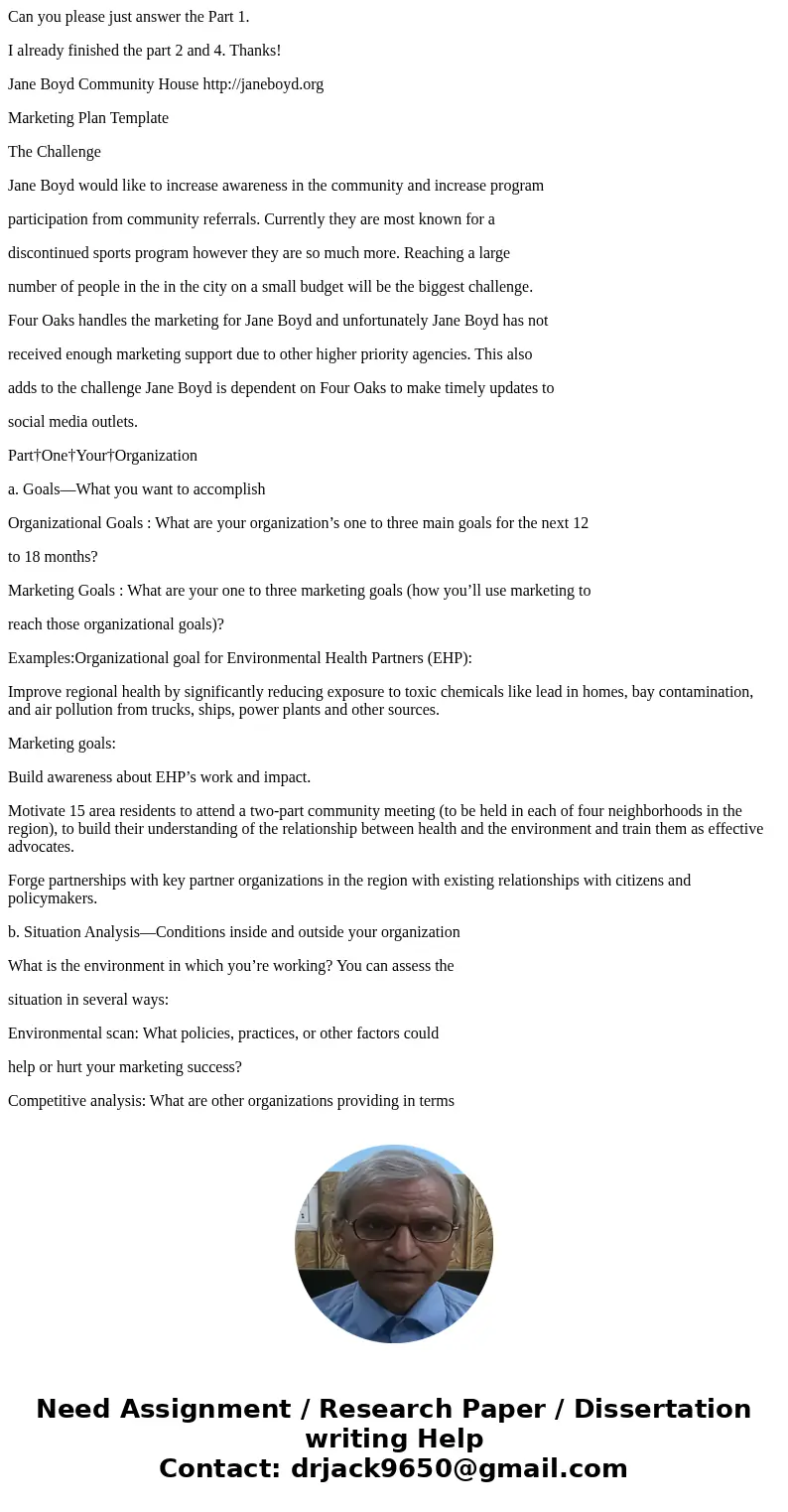
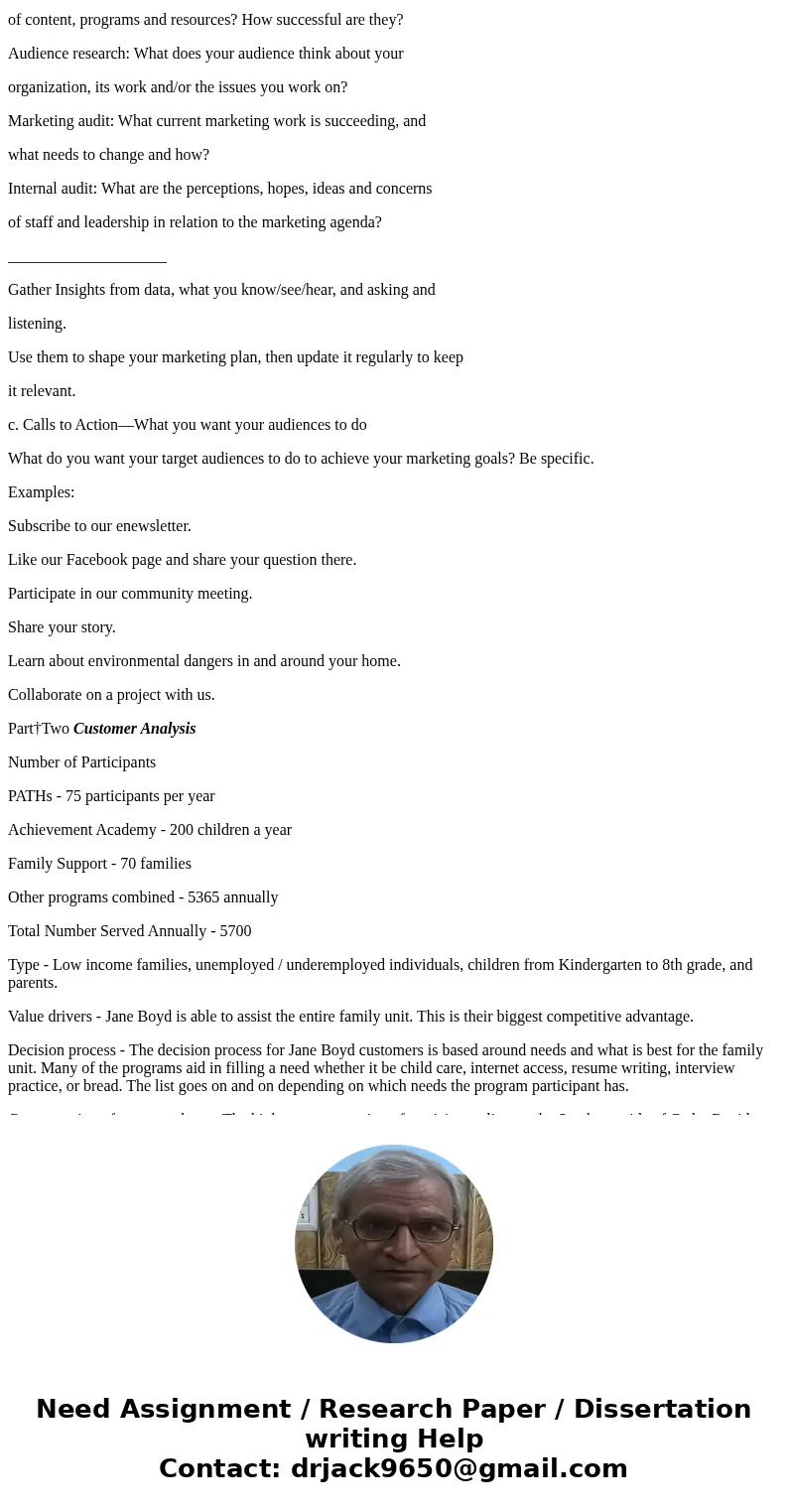
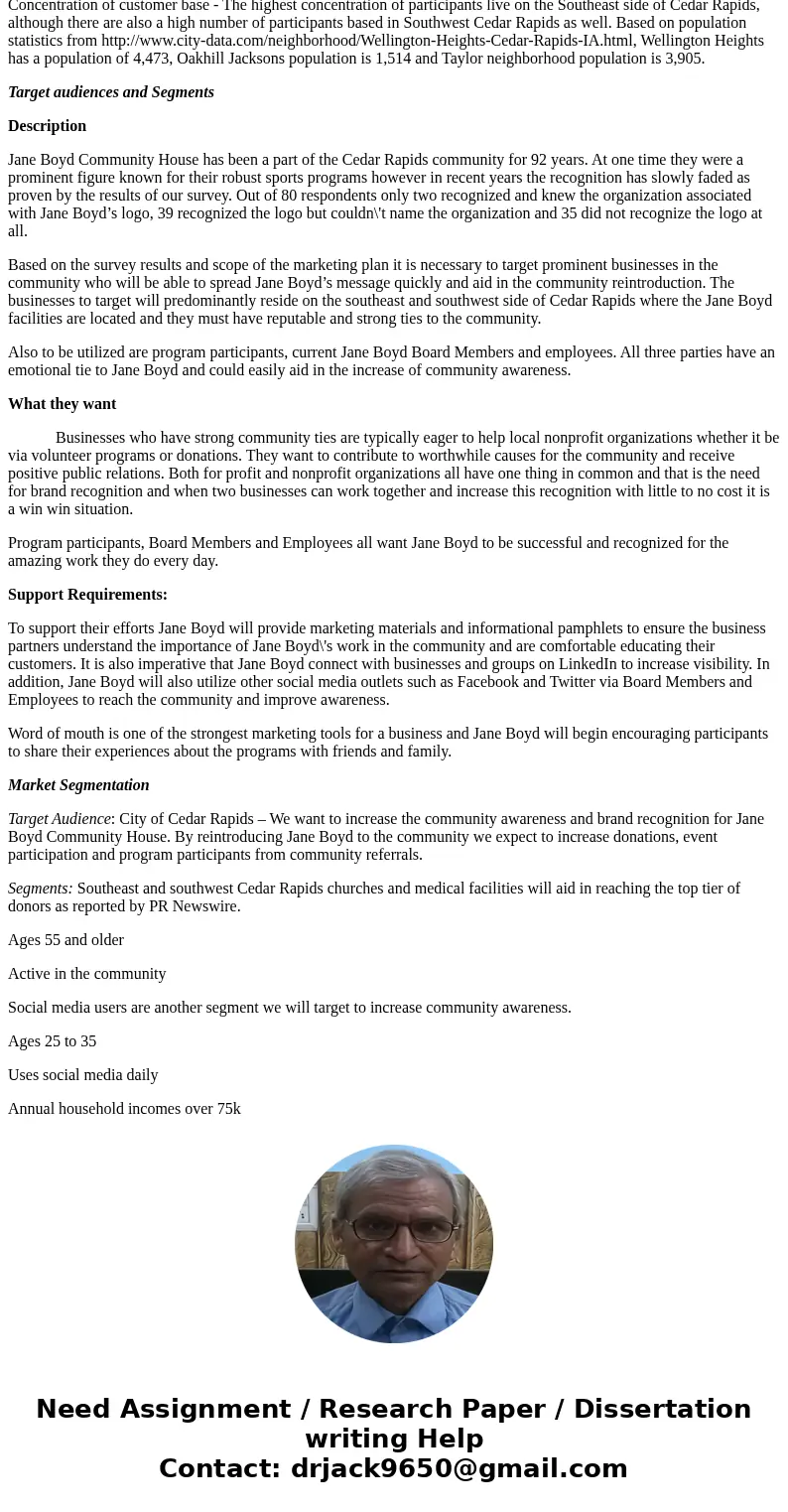
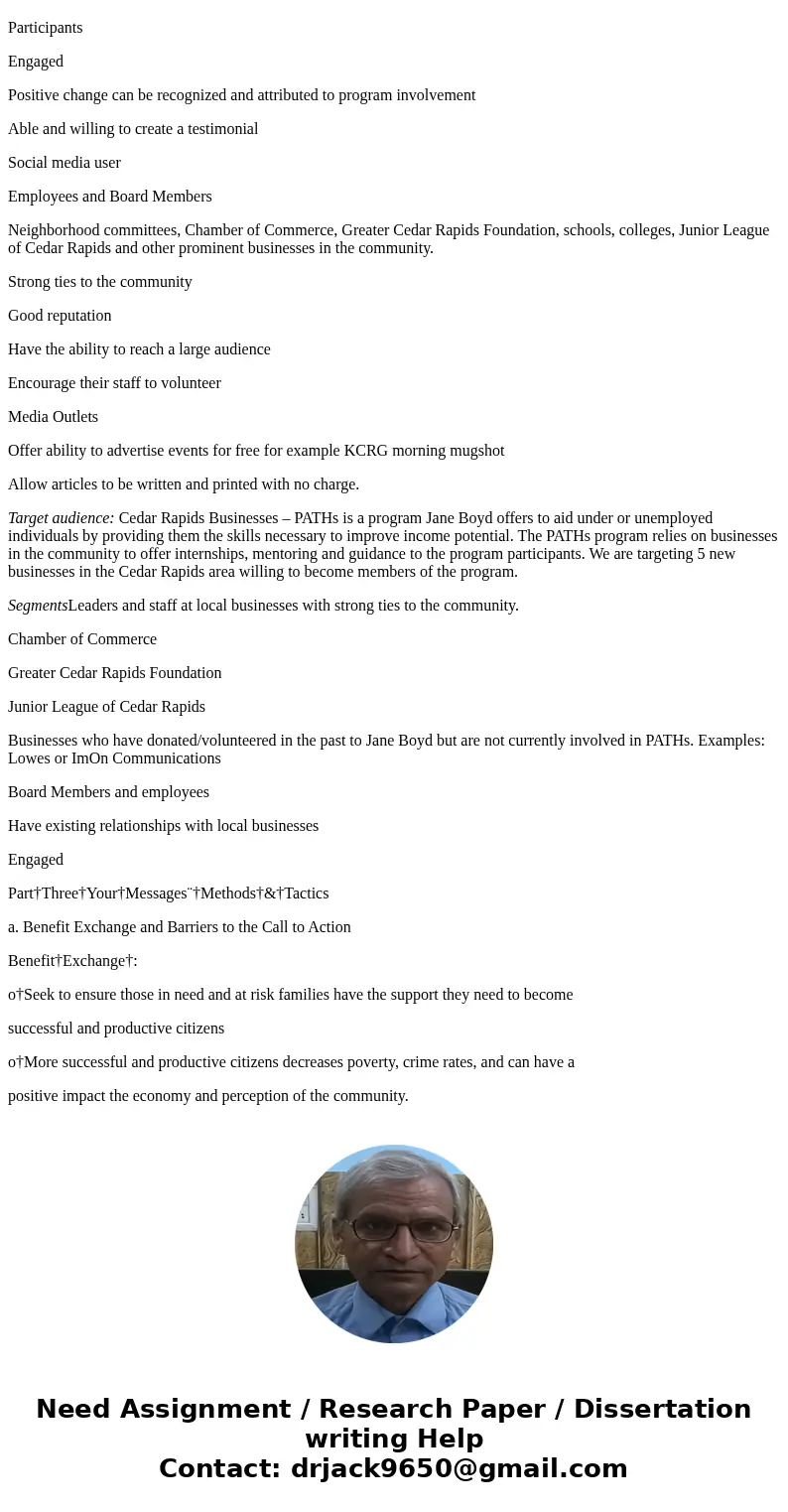
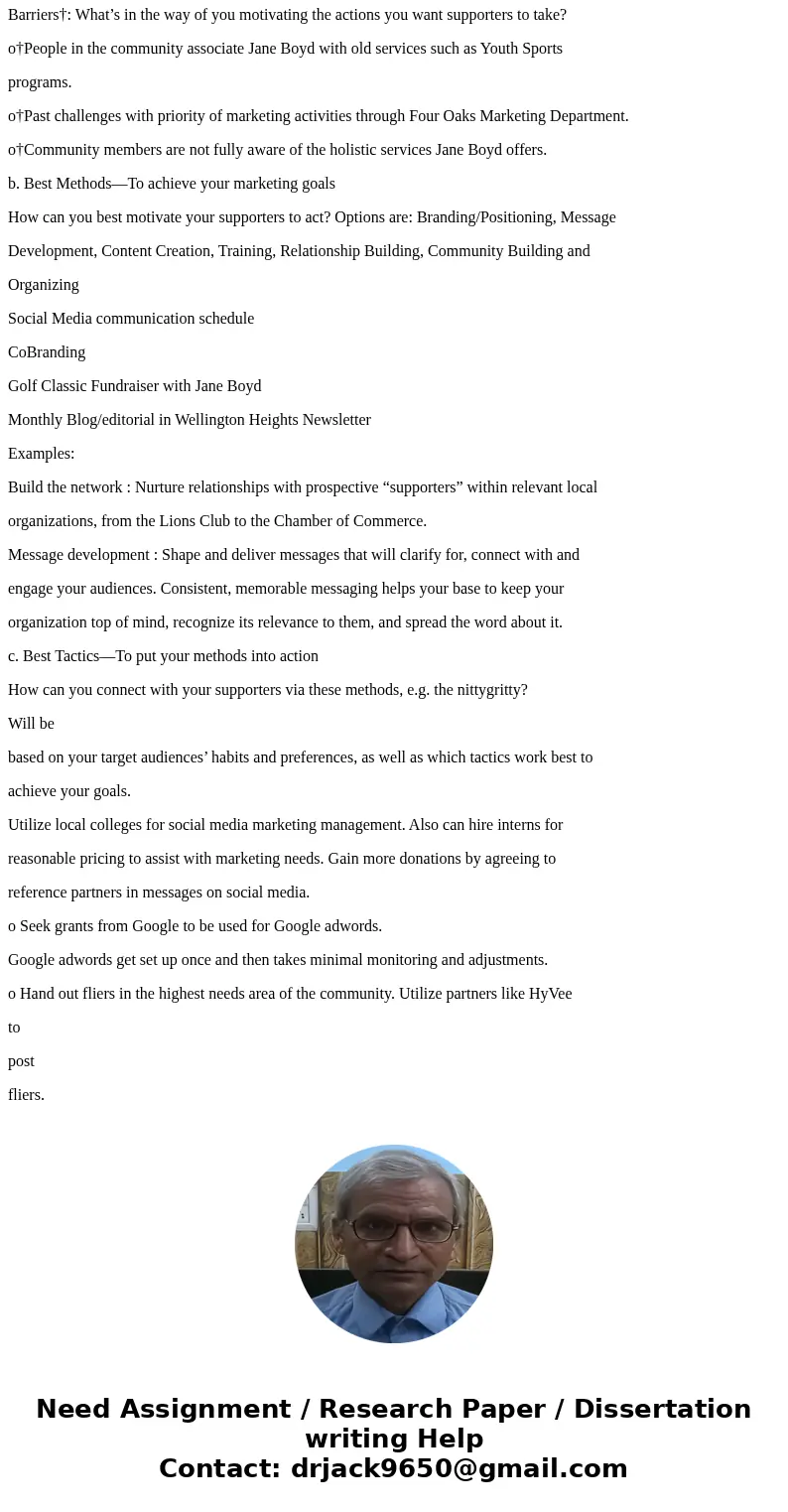
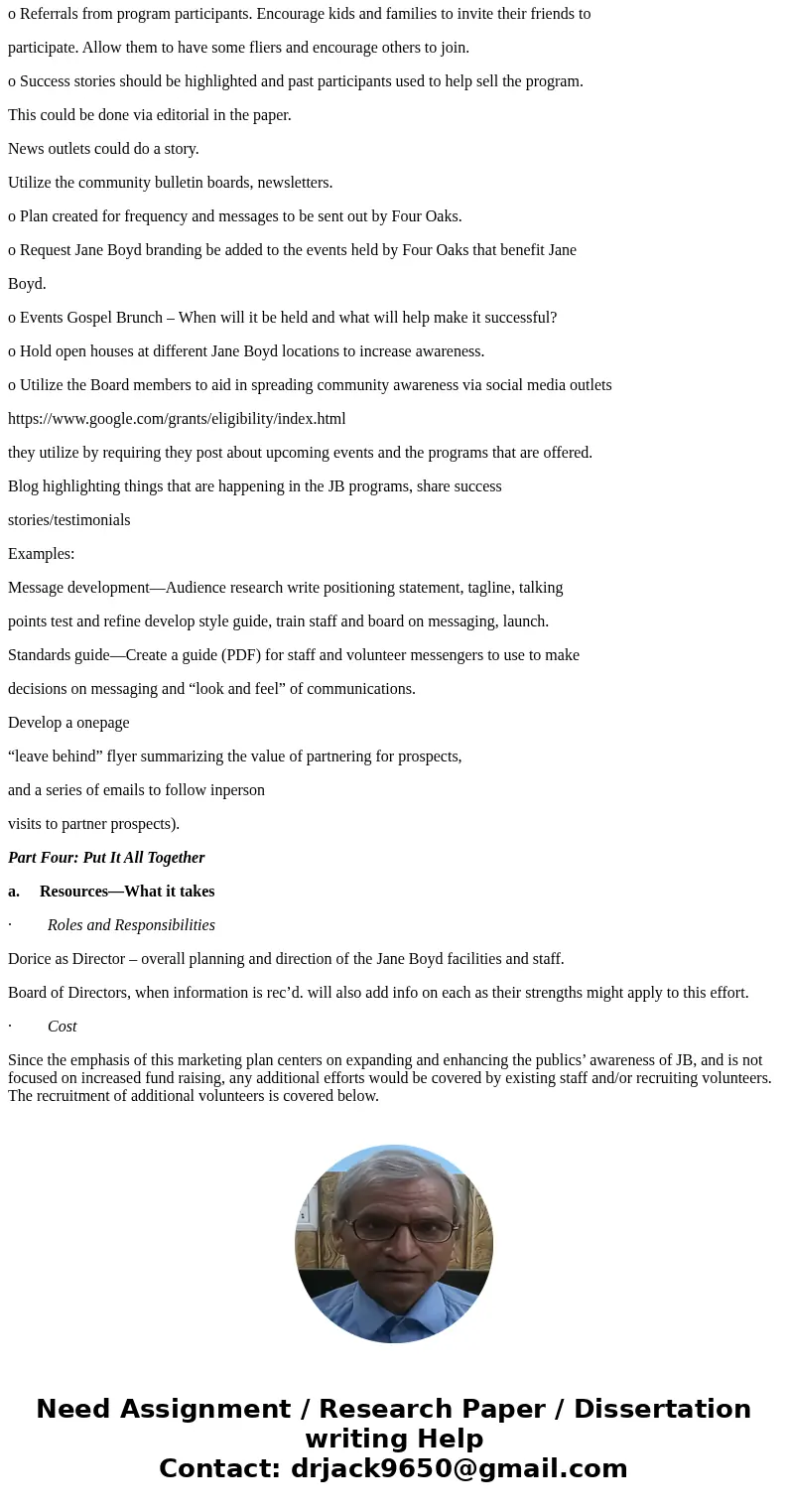
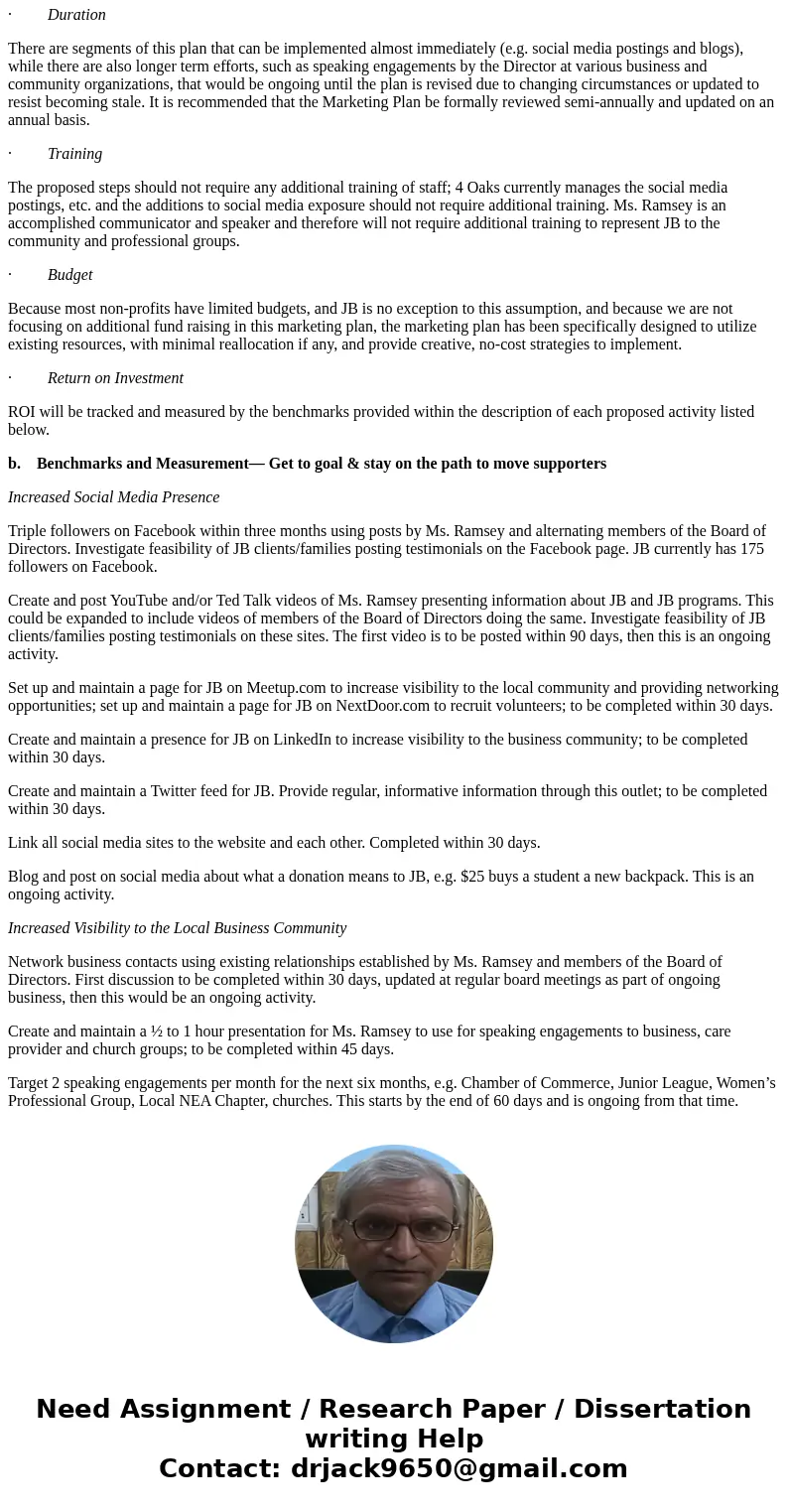
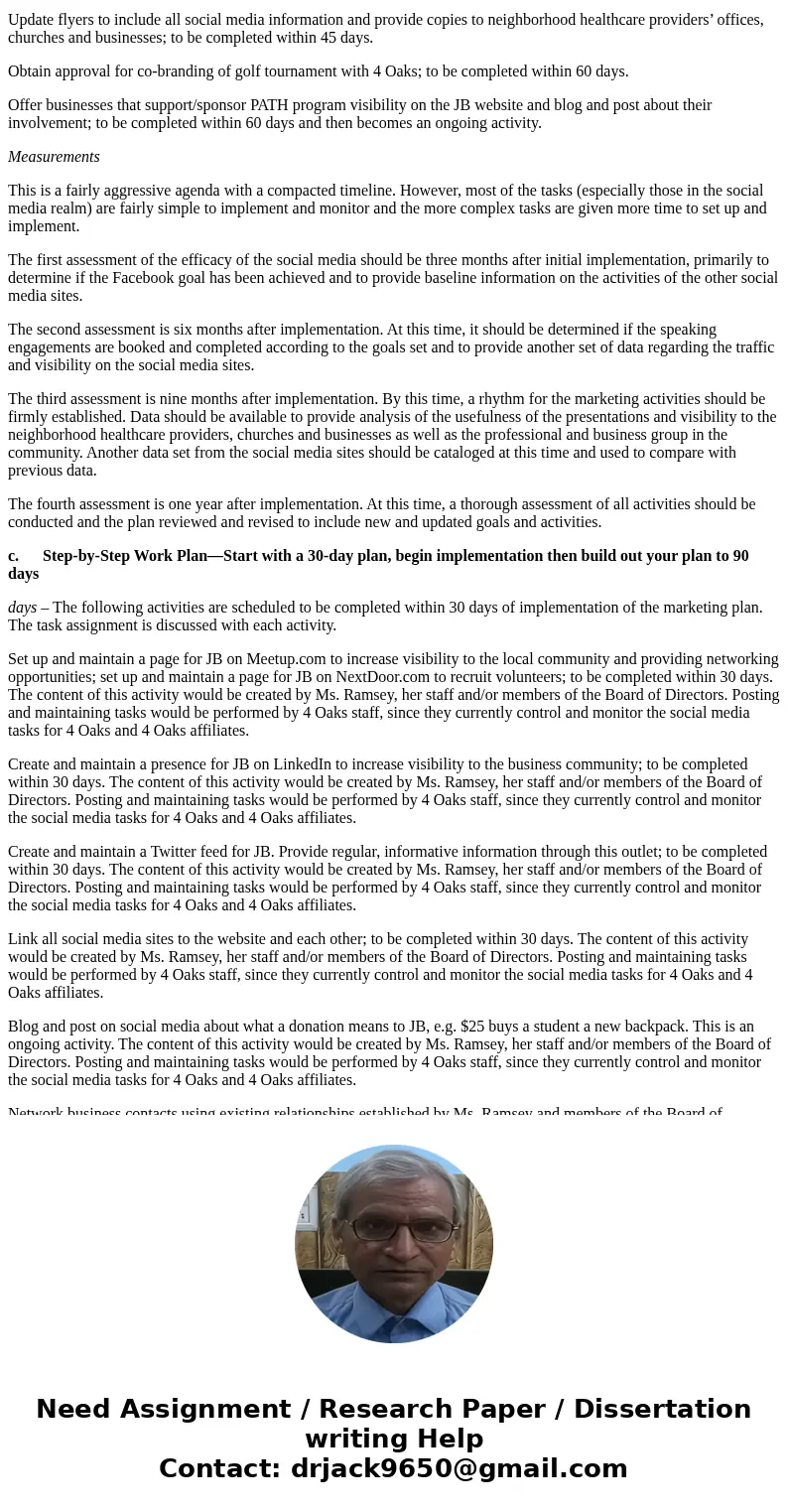
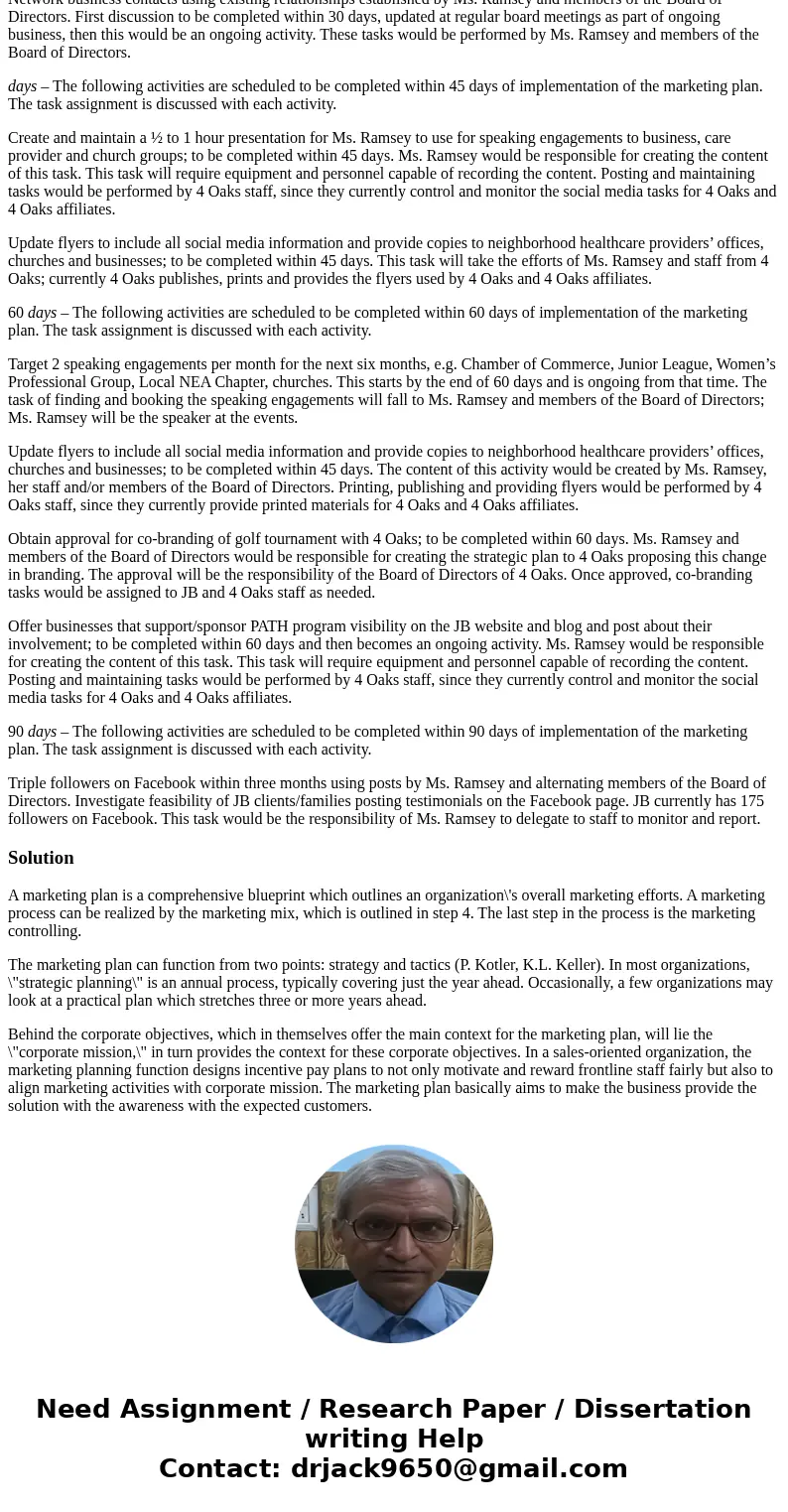
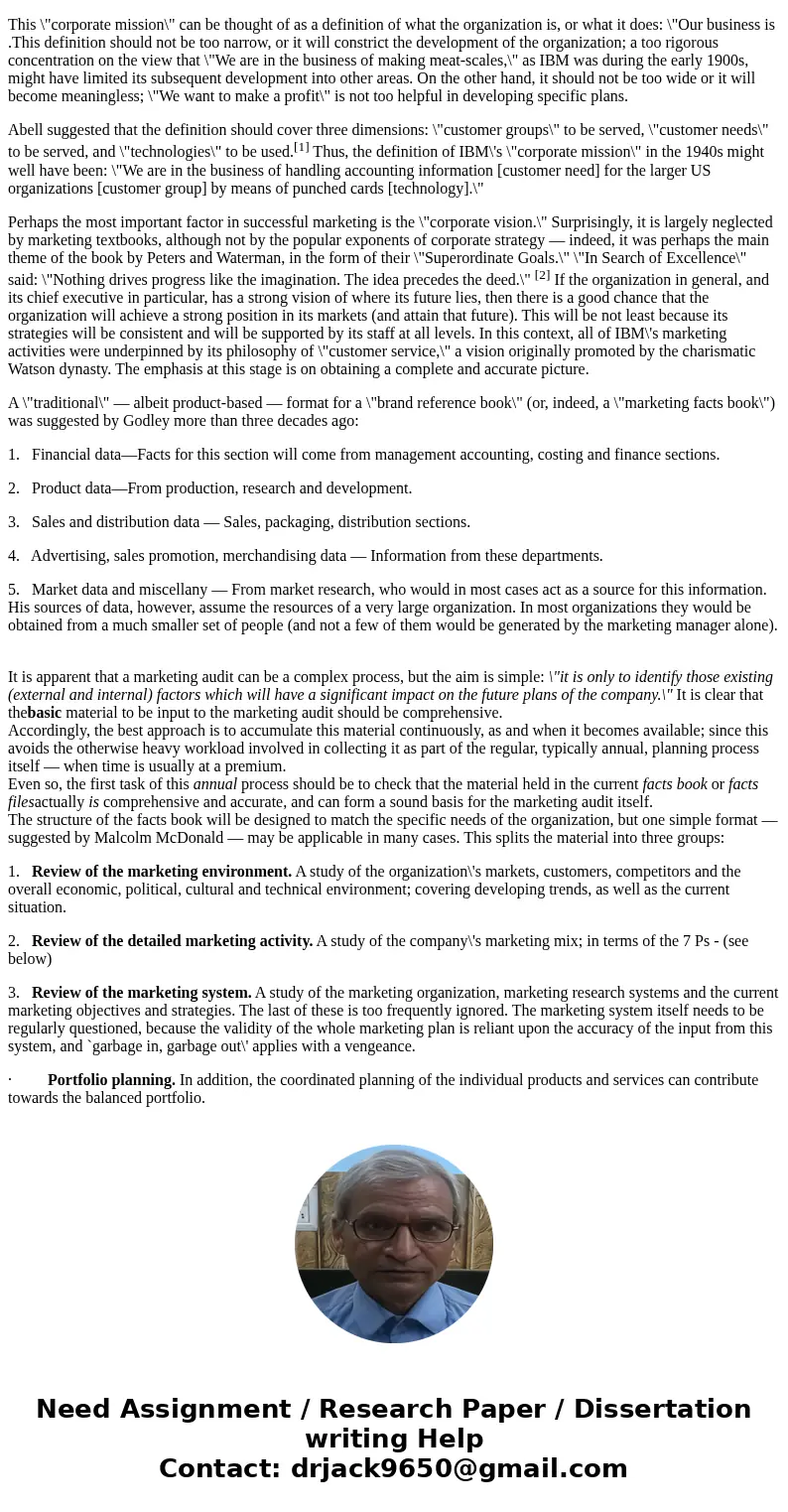
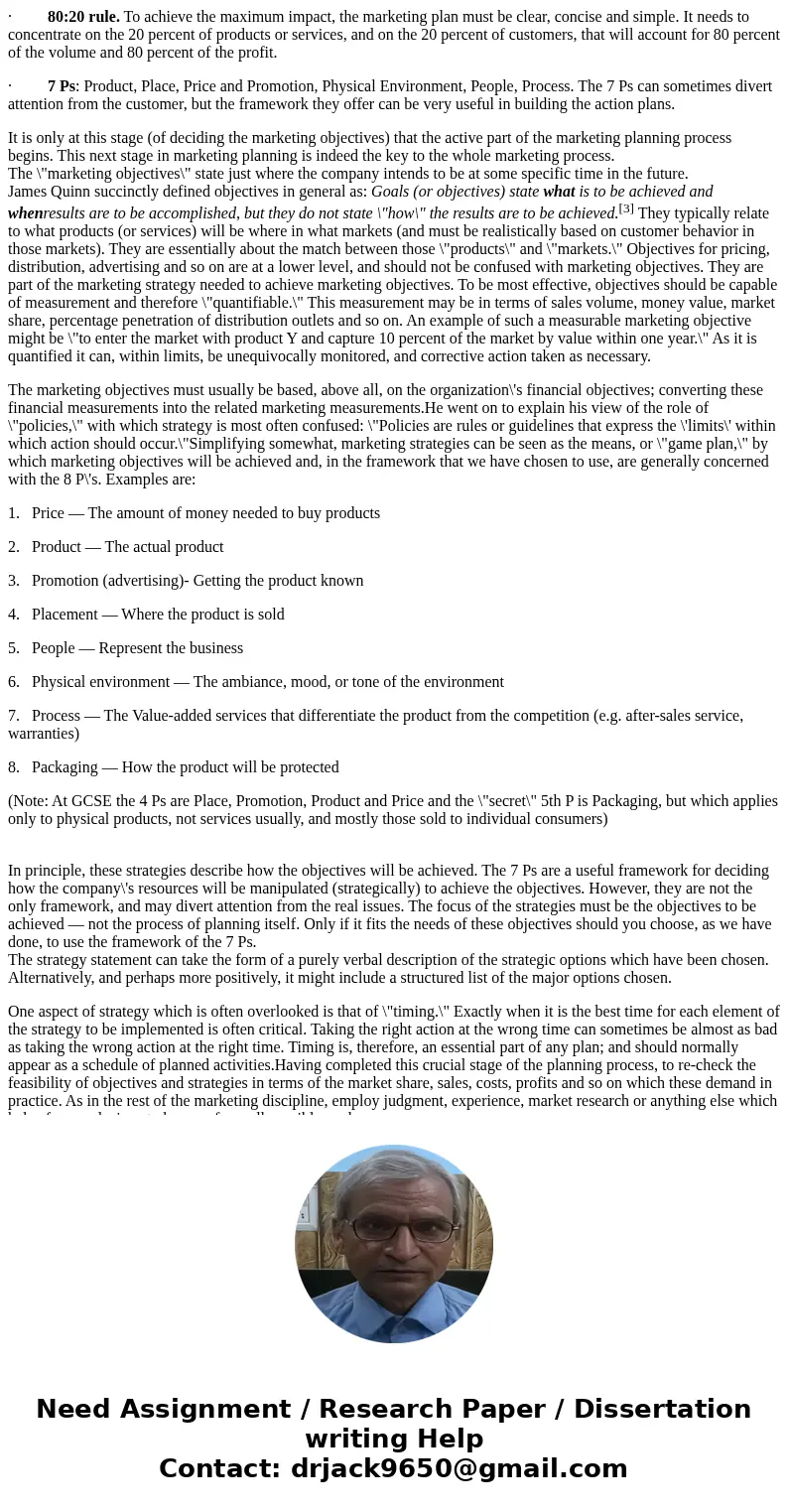
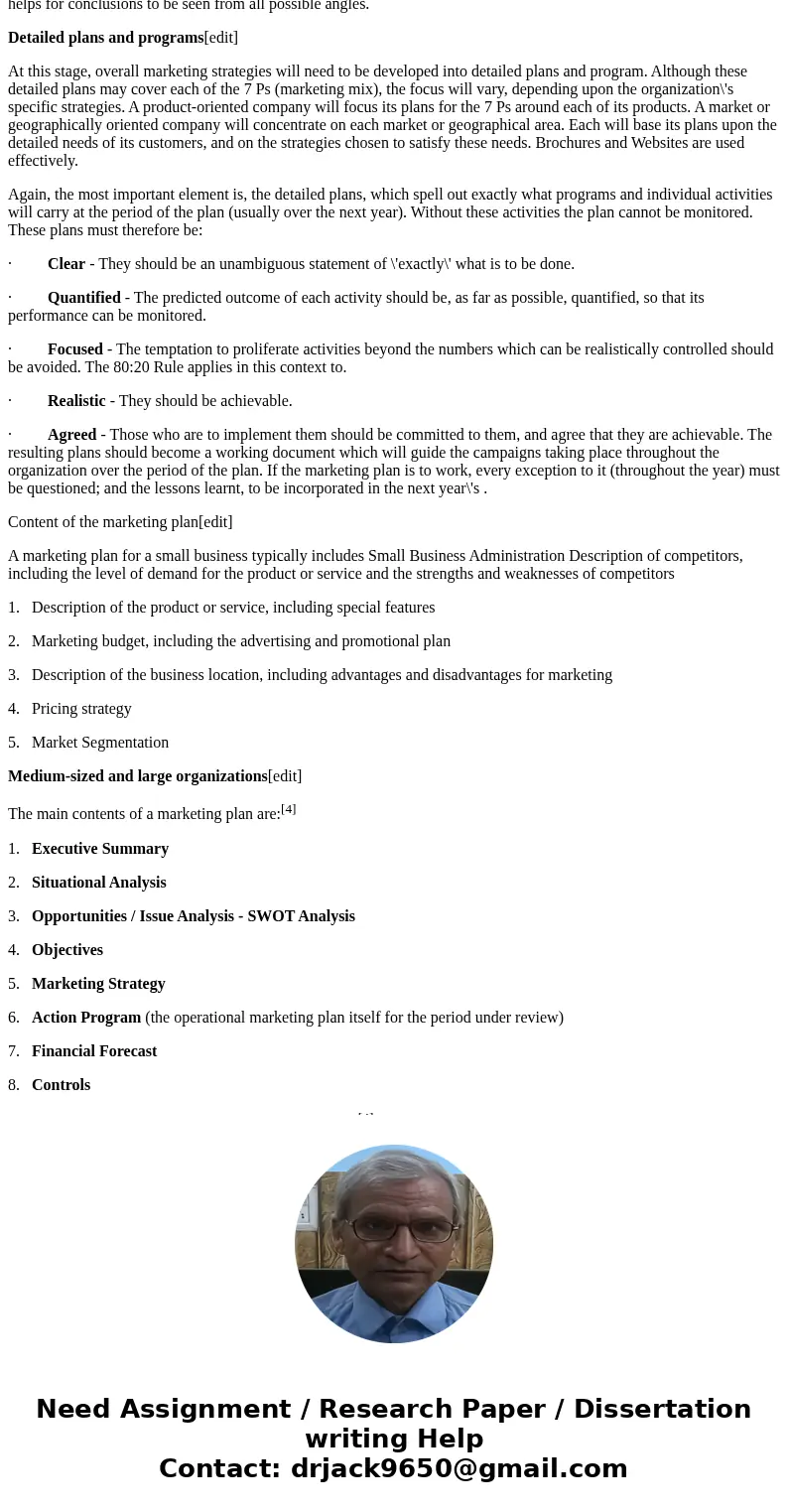
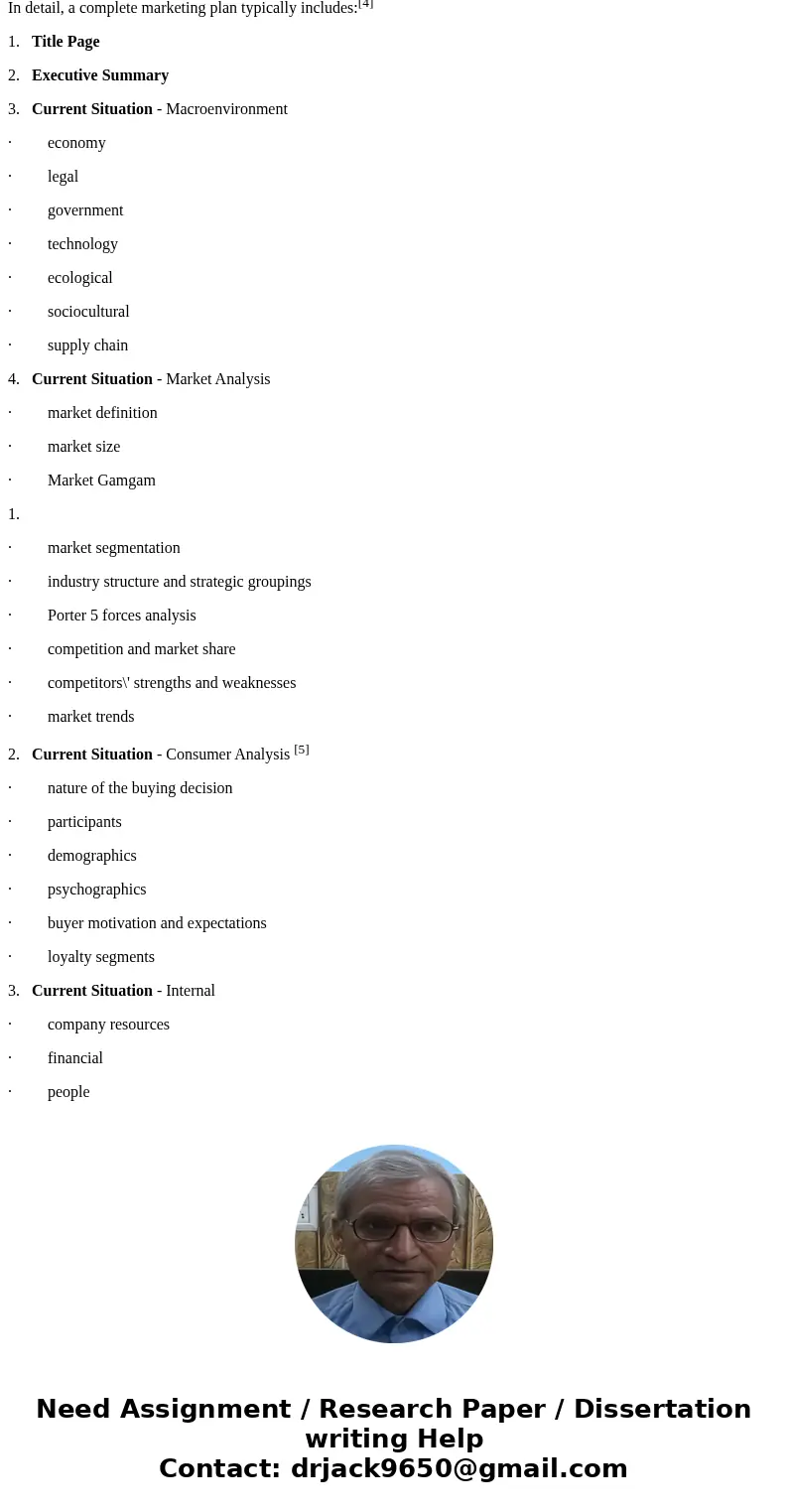

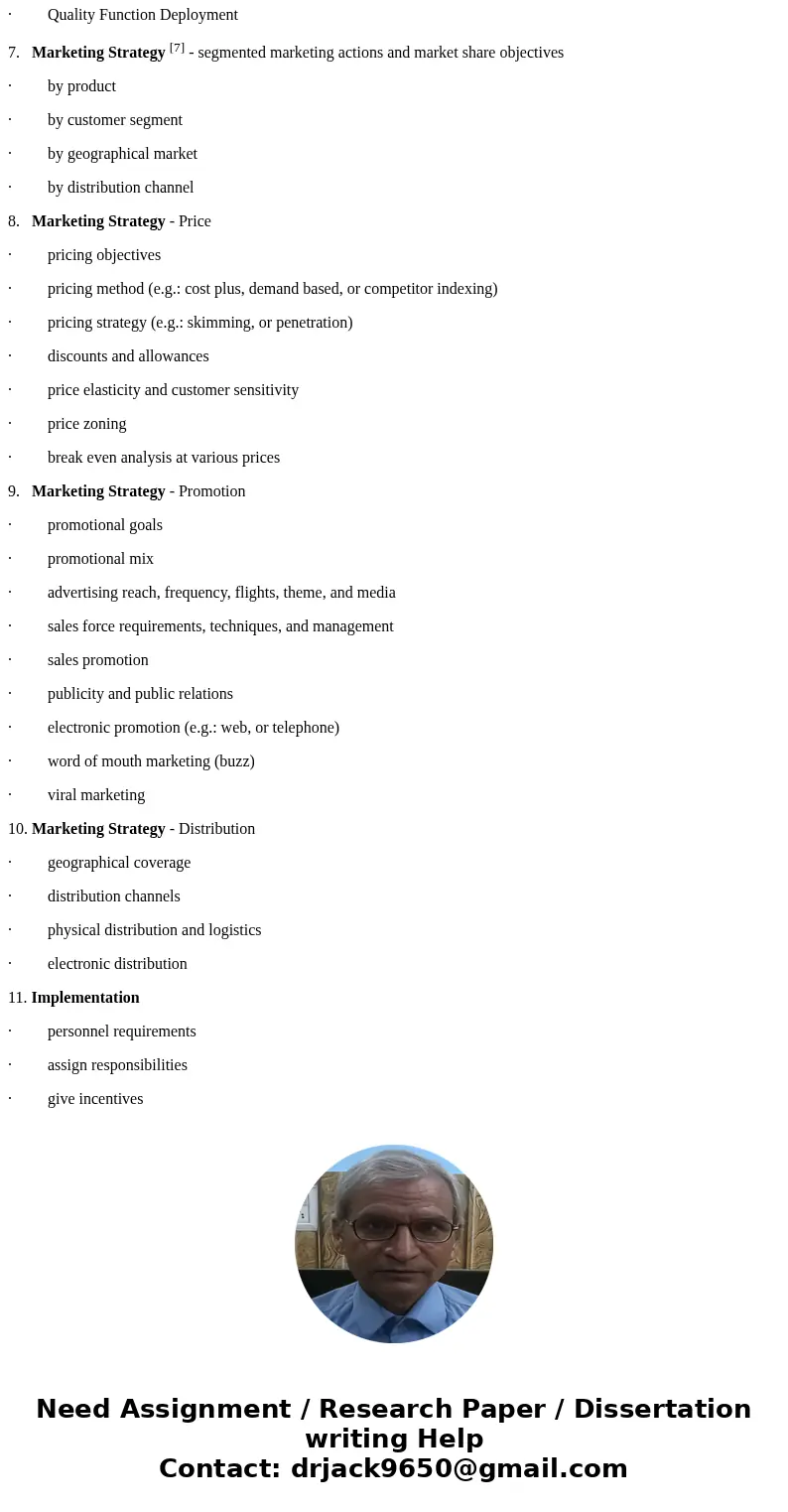
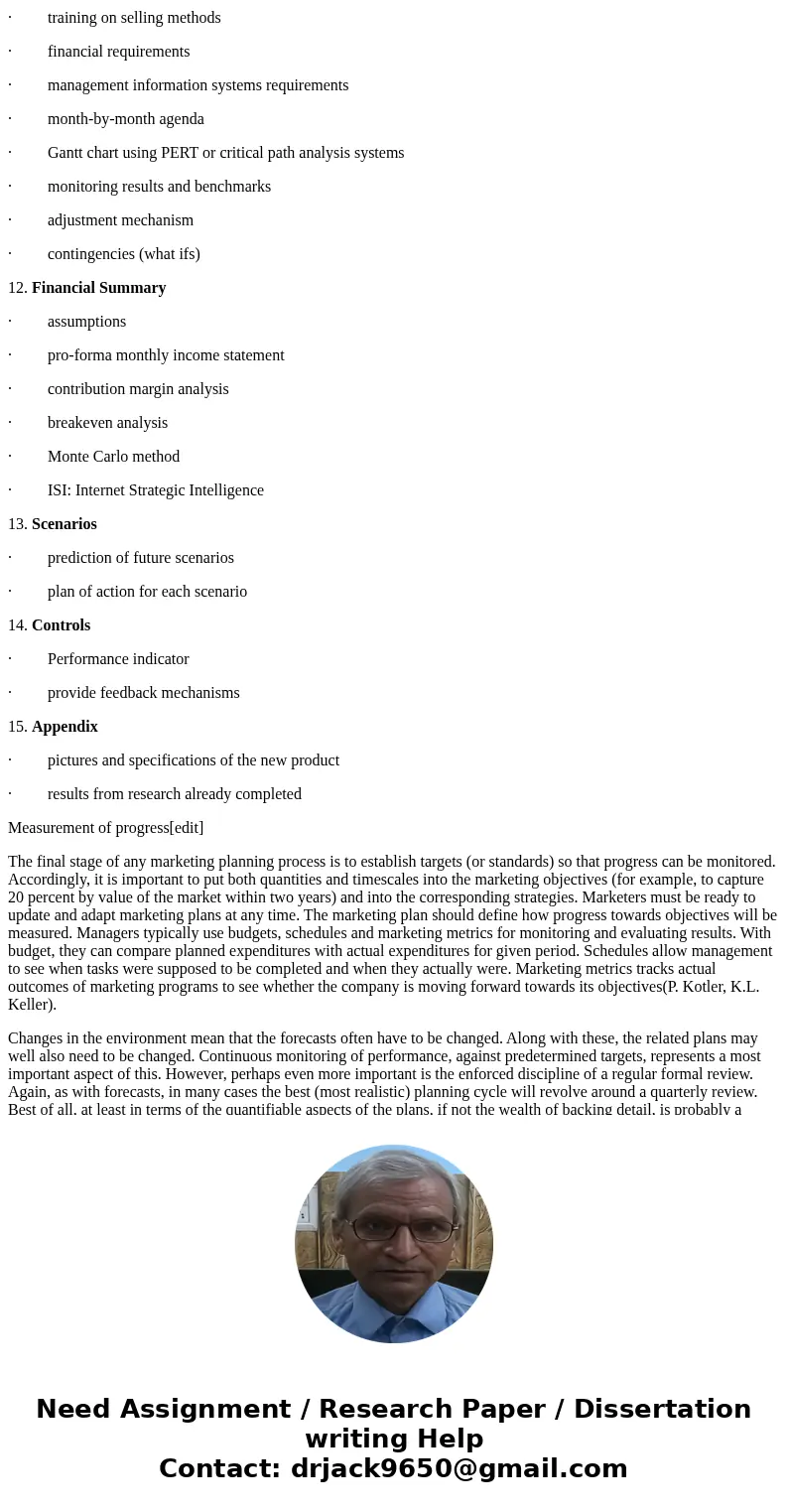
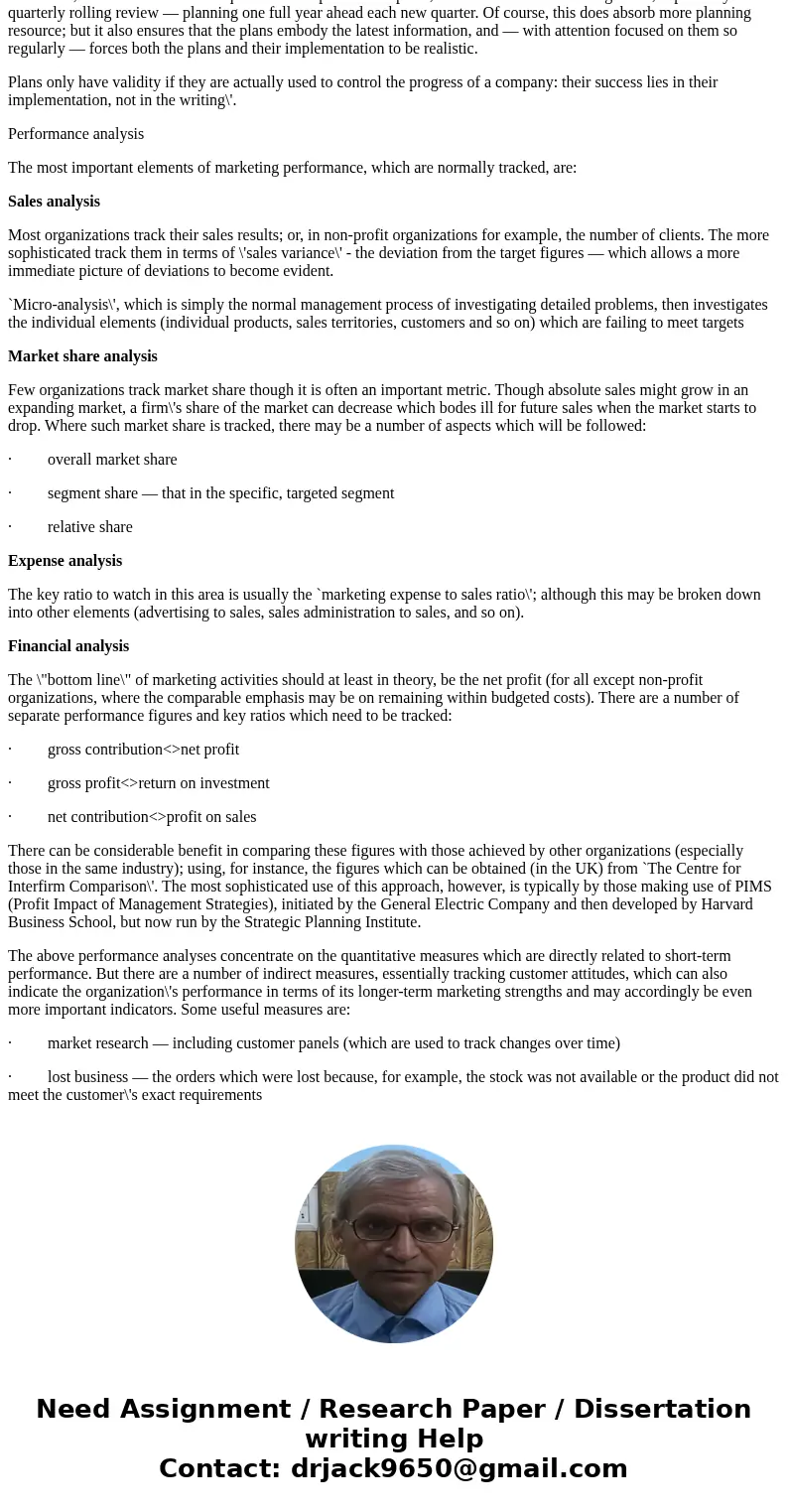
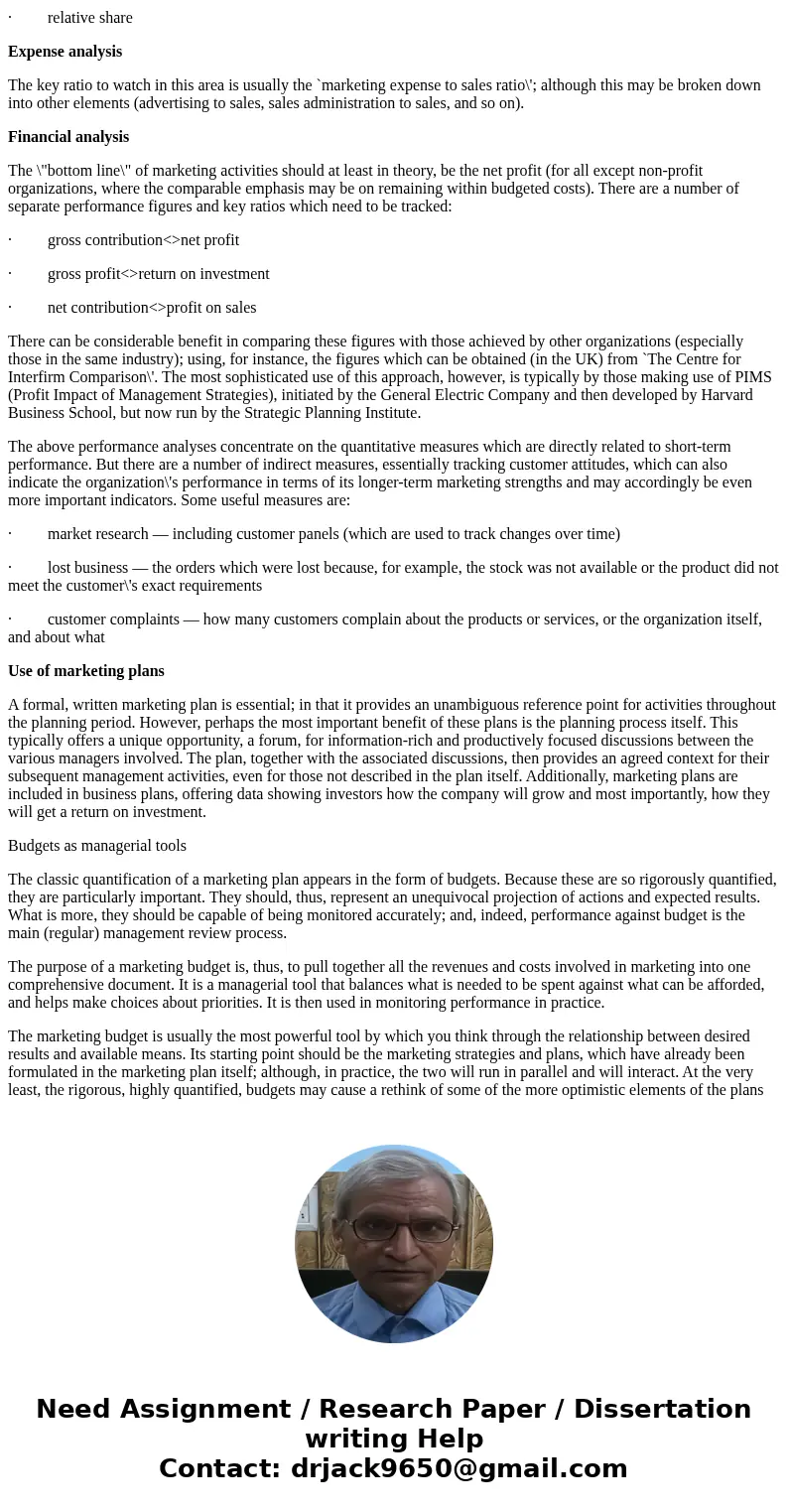
 Homework Sourse
Homework Sourse